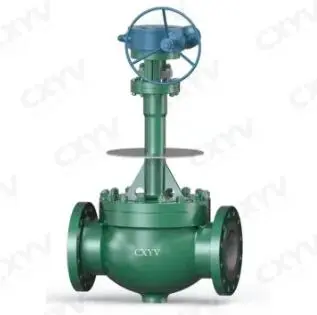Cryogenic valves are designed for use in environments with extremely low temperatures, typically below -40°C (-40°F). These valves play a vital role in several industries such as liquefied natural gas (LNG) production, aerospace, pharmaceuticals, and cryogenic research. A notable feature of cryogenic valves is their long stem, which serves several critical functions:
One of the primary purposes of the extended stem is to separate the valve’s operational elements, like the seal and actuator, from the extreme cold of cryogenic fluids. This design ensures that these vital components remain in a comparatively warmer zone, maintaining their effectiveness without being compromised by the frigid temperatures.
Cryogenic fluids such as liquid nitrogen or liquid oxygen can cause moisture in the air to freeze when they come into contact with it. This frost can jeopardize the functionality of valve components. Using a long stem helps isolate these operational parts, thereby minimizing the risk of frost accumulation and ensuring smooth operation.

Operating valves in extremely cold conditions can pose challenges, including frost build-up and the cold itself. A long stem provides the necessary leverage, allowing operators to manage the valve effectively without having to expose their hands to the freezing environment. This feature enhances both safety and convenience.
Materials respond differently to cryogenic temperatures compared to ambient conditions. The extended stem allows for the thermal expansion and contraction of the valve components, preserving the integrity of the seal and the valve’s performance. This adaptability ensures that the valve continues to function reliably even under extreme temperature changes.
Cryogenic systems often need substantial insulation to maintain low fluid temperatures. The long stem of cryogenic valves provides sufficient space to wrap insulation materials around the valve body, without obstructing valve operation or making maintenance difficult.
In conclusion, the long stem of Industrial cryogenic valves is a fundamental design feature that ensures high performance and reliability in low-temperature environments. By isolating essential components, preventing frost formation, facilitating easy operation, accommodating material expansion, and accommodating insulation, these valves significantly contribute to the safety, functionality, and longevity of cryogenic systems.
Beyond the primary reasons for long stems in cryogenic valves, there are additional insights worth considering:
1. Materials Used: Most cryogenic valves use stainless steel or other alloys resistant to low temperatures and thermal expansion, adding another layer of durability to the design.
2. Maintenance Considerations: The long stem design also facilitates easier maintenance, as it allows technicians to access operational components without disrupting the overall system or compromising the cryogenic conditions.
3. Regulatory Compliance: Certain industries have stringent guidelines for equipment operating in cryogenic environments. The long stem design often helps in meeting these regulatory requirements.
4. Customized Solutions: Depending on the specific application, cryogenic valves can be customized regarding stem length, materials, and insulation compatibility to maximize efficiency and reliability.
Frequently Asked Questions:
Q: Can cryogenic valves be used for both gases and liquids?
A: Yes, cryogenic valves are designed to handle both cryogenic liquids and gases. They are commonly used in systems involving liquefied gases like LNG and oxygen.
Q: What is the typical lifespan of a cryogenic valve?
A: The lifespan largely depends on the operating conditions and maintenance practices. However, well-maintained cryogenic valves can last several years under normal operating conditions.
Q: Are there specific standards for cryogenic valve manufacturing?
A: Yes, standards such as those from the American Society of Mechanical Engineers (ASME) and the International Organization for Standardization (ISO) provide guidelines for the design, manufacturing, and testing of cryogenic valves.
Comments
Please Join Us to post.
0